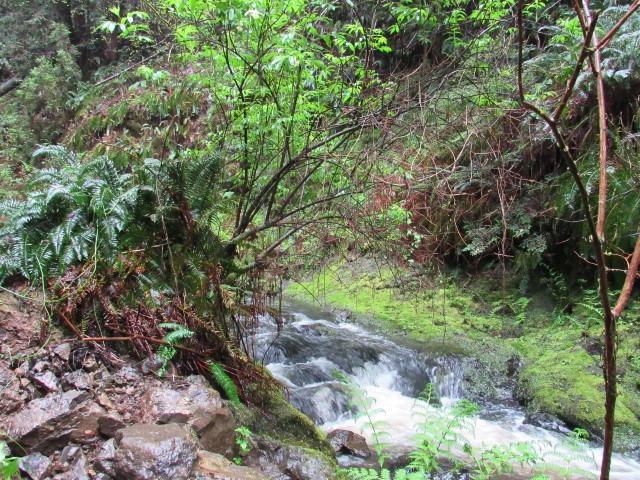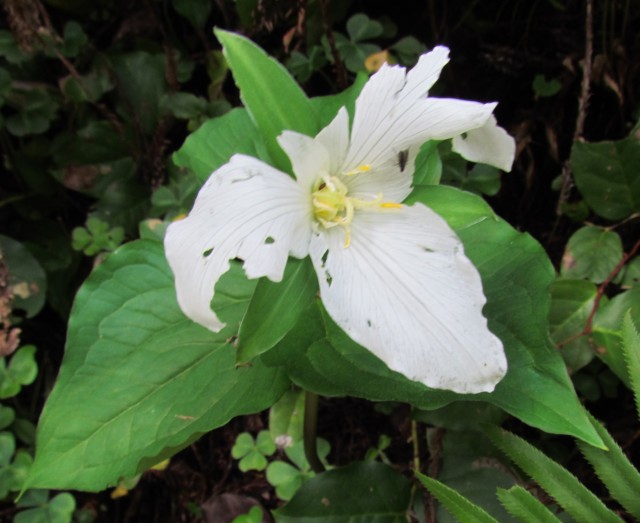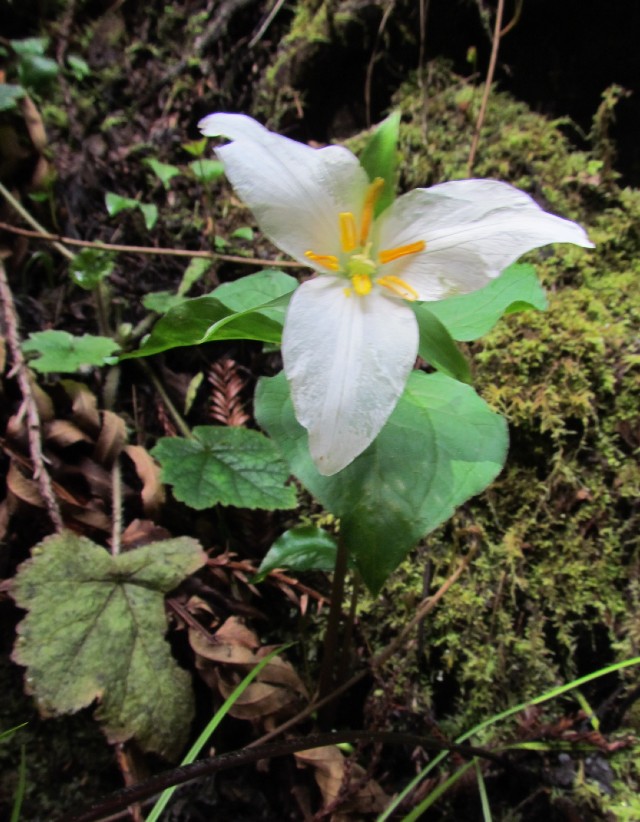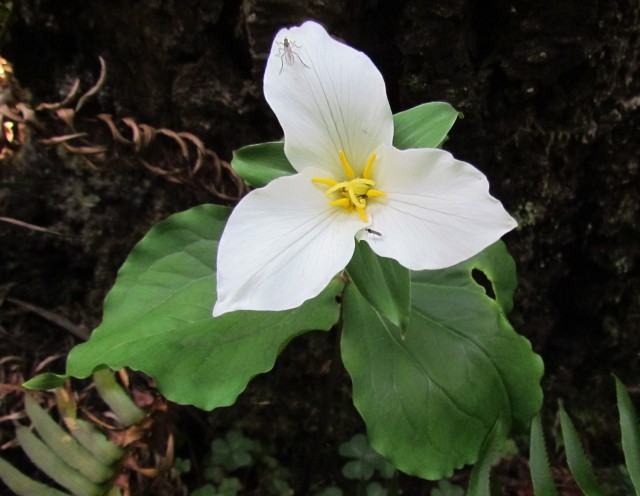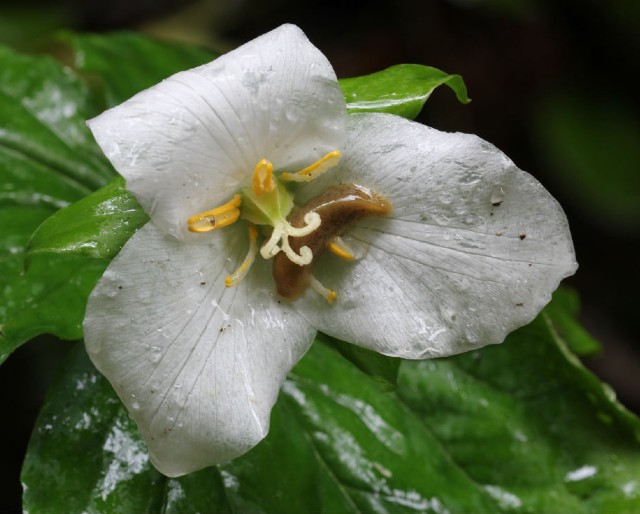This spectacular wildflower was easy to spot in the overcast, rainy Pacific Northwest forest. This largest and showiest type of trillium is frequently cultivated in wildflower gardens.
The species is endemic to the western United States, ranging from west central California through Oregon to Washington. It is found in diverse habitats, such as the moist slopes of mixed deciduous-coniferous forests, among shrubs, thickets and along stream banks and river beds.
This plant has an elegant appearance in low-growing clumps of large green leaf-like bracts and brilliant white flowers. Scientifically known as Trillium albidum, this is a very long lived genus, with some species known to live for multiple decades. In the wild, most species take 7-10 years to produce flowers from seeds.
Giant White Wakerobin’s seeds are mainly dispersed by ants, which transport the seeds to their homes in order to consume part of the seed coat. This plant also spreads underground through rhizomes.
As its common name suggests, it is one of the earliest blooming of California native flowers and a herald of spring.

